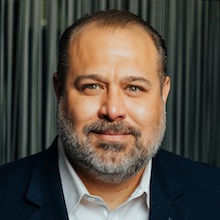Modernization efforts require commitment from all levels of the organization and a strong presence from leadership. In fact, the larger and more difficult the initiative is, the stronger the leadership presence must be. Take for instance an 18-month software implementation. There must be careful due diligence and planning completed before the implementation begins, followed by solid execution during the 18-month implementation, and then a strong “finish” with configuration and process changes.
In other words, it takes more than 18-months to replace your legacy system. If we were to calculate the total amount of time that an organization spends replacing its legacy system, it would be closer to four or five years. That’s five years that is required for stakeholders and team members to trek through a modernization project with the support of leadership. But honestly, does it really stop?
Change is inevitable, and the complexity of the variables is growing past current change management practices. There may always be sudden changes or unplanned events (e.g., pandemics) which will demand conformity or introduce some kind of disruption, calling for more traditional change management approaches. But if we as leaders set our sights on continuously evolving the organization, in scope with its integrated strategy, we can generate a culture of vitality and inspiration.
Sign Up For Our Articles
"*" indicates required fields
In other words, stating that “we need to change, and we need to change faster” does not typically play well in today’s volatile, uncertain, complex, and ambiguous (VUCA) world. Think about it: How do you respond personally when some tells you that you need to change? Does that motivate you? They might as well be calling your baby ugly, right?
Rather, if someone were to approach you and encourage you to evolve, chances are that it may better received or you may even feel more inspired. Well, that can heavily depend on the messenger (leader).
“Nothing is so painful to the human mind as a great and sudden change.”
– Mary Shelley
A blueprint of an evolutionary leader is not easy to obtain. It involves sophistication at many different levels (e.g., vision, modeling, inspiring communication, etc.). There must be a focus and clear understanding of where the organization is going, and that awareness must be instilled into its culture.
An evolutionary leader understands that change is often driven by theory, fad, and someone’s ideas; it’s often a prescribed or even frantic reaction to events. An evolutionary leader also understands that it is okay to evolve from failures through iterations and that the organization must get comfortable learning this way.
Oftentimes, change can be so instantaneous that it’s like a light switch; there’s no learning and people will either resist or accept. In either case they may not learn. Alternatively, approaching the organization to evolve its people, processes, and technology carries a sense of driven purpose that gets people tuned to the same frequency. Evolution management is based on the belief that organizations can achieve sustainable growth by continuously adapting, improving, and learning.
“In order to make choices that will lead to a better future, it helps to be aware of the forces at work in evolution; after all it is through them that we will succeed or fail as a species.”
– Mihaly Csikszentmihalyi, The Evolving Self
All of us deal with both change and evolution in our lives. Changes are forced on us and can be positive or negative (inheriting money vs. chronic illness). To grow as a person is choosing to evolve, and this is most often done by inspiration. Why can’t this be replicated within an organization? I think that it can. So, as you take on new modernization projects like software implementations or even minor upgrades, don’t lose sight of your inspired evolution, and you just might end up attracting change.
Evolution Management vs. Change Management Comparison
| EVOLUTION MANAGEMENT | CHANGE MANAGEMENT | |
|---|---|---|
| SCOPE | Continuous improvement of existing processes | Managing a specific change initiative |
| APPROACH | Proactive approach to change; growth modeling | Reactive approach to change; fixed mindset |
| SPEED | Smaller incremental changes over time | Large-scale changes all at once |
| RESISTANCE | Recognizes willingness to evolve | Recognizes resistance to change |
| OUTCOME | Sustainable growth via continuous improvement | Adoption to a specific change initiative |
| MOOD | INSPIRING | SHOCKING |

About the Author
Chad Noland is the Modernization Practice Lead for FPOV. Chad has spent much of his career serving as a liaison between the business customer and IT. Cultivating strong relationships with both the customer and IT development teams allows Chad to produce technology solutions in complex and volatile environments. Learn more about Chad Noland.

